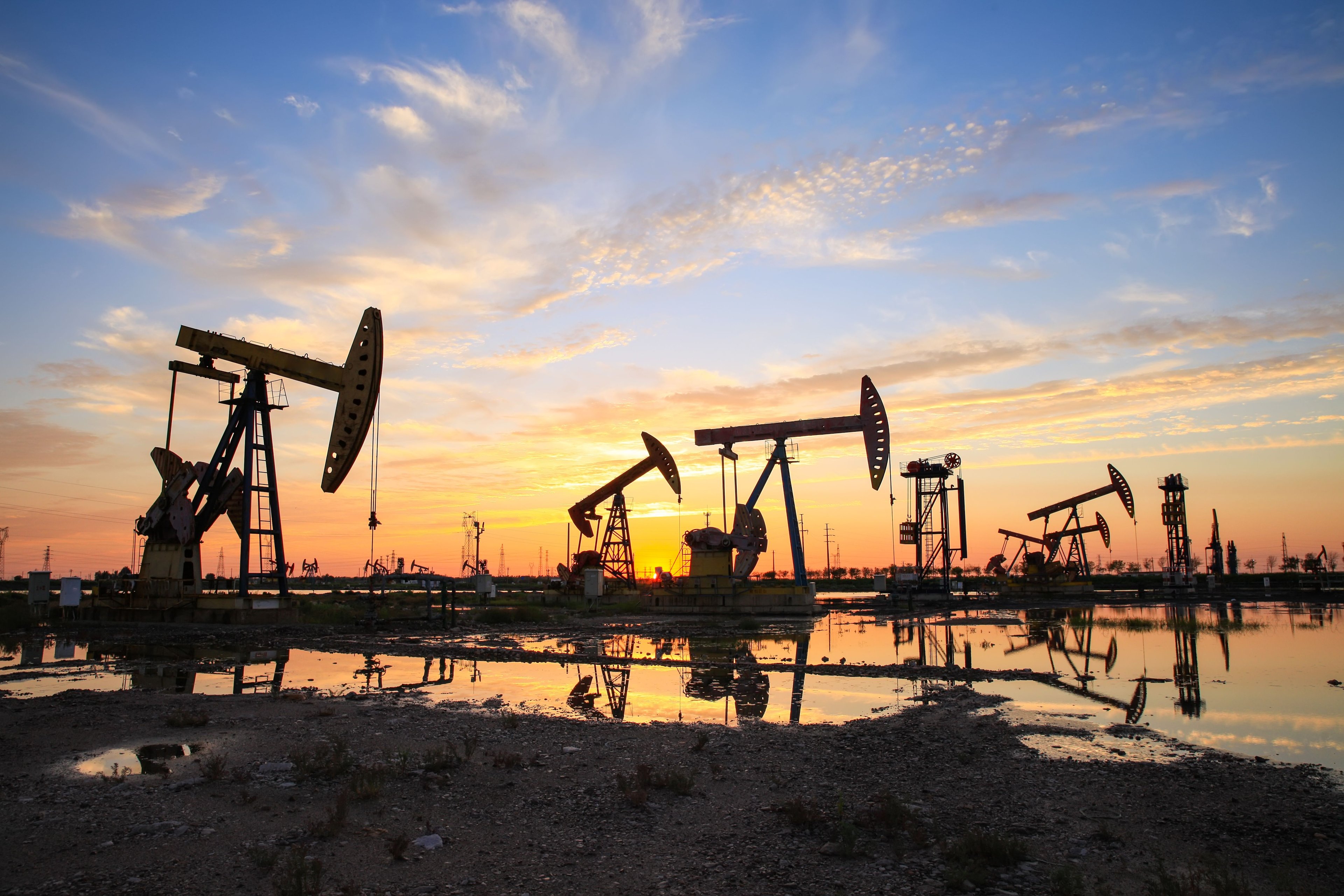Oil and gas drilling rig company Helmerich & Payne, Inc. (HP 0.35%) is a leader in a highly cyclical industry. The worst of the recent drilling downturn is clearly over if you look at the massive rebound in the company's utilization rate. But when you look at the total number of rigs it owns, you realize there's a long way to go before things are back to where they were in the heydays of mid-2014. Here's what you need to know.
It's the biggest
In mid-2017, Helmerich & Payne had roughly 350 drilling rigs in its U.S. land fleet, accounting for around 90% of its total rig portfolio (it also serves the offshore and foreign onshore markets). The vast majority of the company's U.S.-focused equipment (around 80%) is made up of alternating current (AC) rigs, which are more flexible and efficient than older rigs. The oil and gas industry has been making a long-term shift toward these rigs for years.

Image source: Getty Images.
You wouldn't believe the size of Helmerich & Payne's rig count compared to its peers. Patterson-UTI Energy, Inc. (PTEN 2.21%), the next largest direct competitor, has less than half as many AC rigs. Nabors Industries Ltd. (NBR +4.33%) has around a third as many U.S. onshore AC rigs. That helps explain why Helmerich's U.S. onshore market share in the AC space is 29% compared to Patterson's 20% and Nabors' 16%.
The opportunity and the problem
So Helmerich & Payne is the clear leader in the U.S. onshore market. The upturn has been good to the company, too, with its utilization more than doubling from the low it hit in mid-2016. The problem with that statistic, however, is that the utilization rate went from a dismal 24% in June 2016 to 52% in June of 2017. A big improvement to be sure, but the company still had 48% of its U.S. land fleet sitting idle.
Generally speaking, rigs that aren't drilling aren't earning Helmerich & Payne any money. And that's the catch: The company has the biggest AC fleet but also the most idle AC rigs of any of its direct peers. That's an opportunity, but also a risk.

Helmerich & Payne's rig fleet shows the opportunity and risk. Image source: Helmerich & Payne, Inc.
If demand for U.S. onshore rigs increases, Helmerich & Payne is in a unique position to supply customers with the most advanced equipment. It doesn't need to build or acquire new rigs, just pull an idle one back into action. That means it can act fast to meet demand, and boost its top and bottom lines -- but only if demand continues to move higher.
If demand remains at current levels, then Helmerich & Payne has a problem. It's sitting on a rig portfolio with a significant amount of idle equipment. That's a drag on the top and bottom lines. And, worse, it could lead to asset writeoffs if demand never returns to previous peak levels.
The takeaway
This is a glass half-full versus a glass half-empty situation, with Helmerich & Payne's future heavily influenced by what happens to the U.S. onshore drilling market. If drilling demand moves higher, Helmerich is in a great position to prosper. If it is moribund, however, it will be carrying a lot of dead weight in its portfolio. This is part of the reason why the company offers a hefty 5.9% yield. But now that you know the rig stats, you can make a more educated decision about the risks and opportunities facing this high-yield stock.






